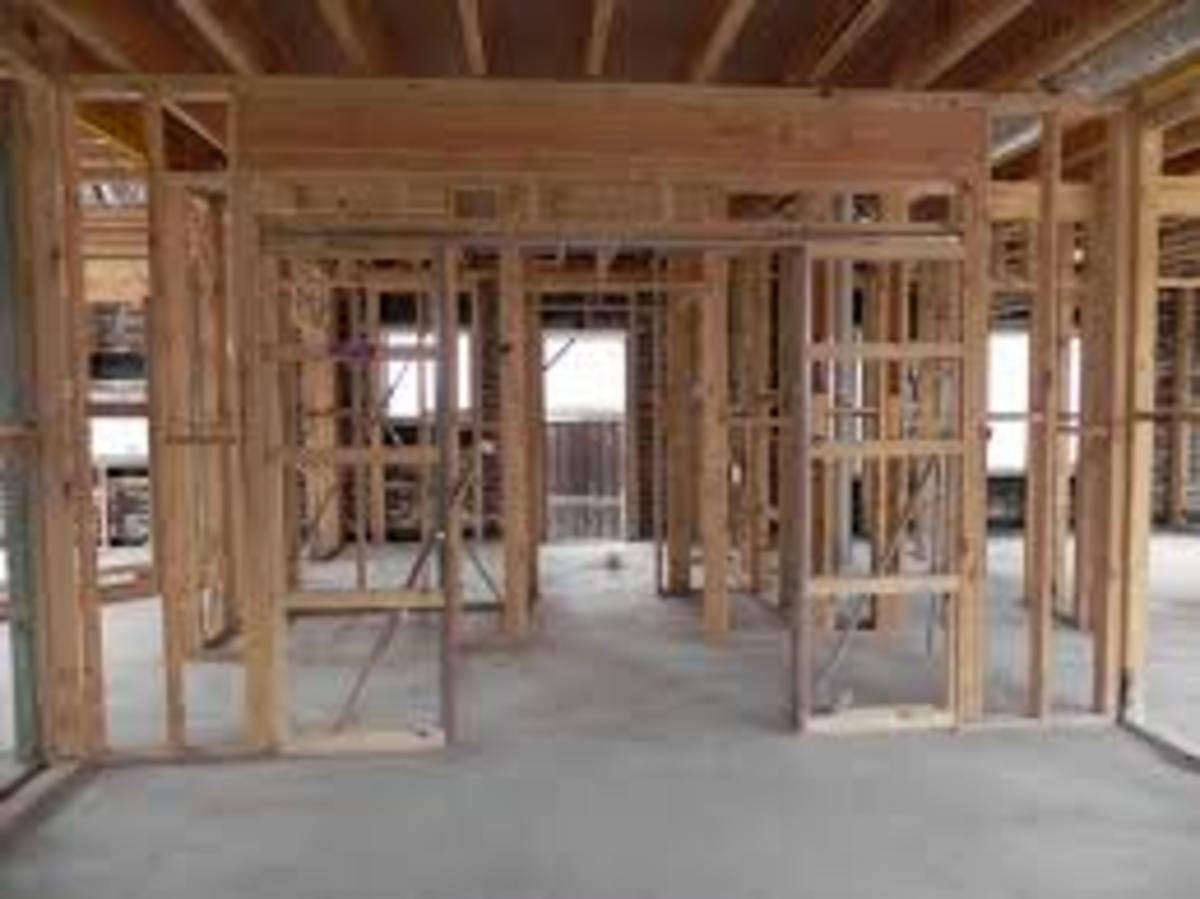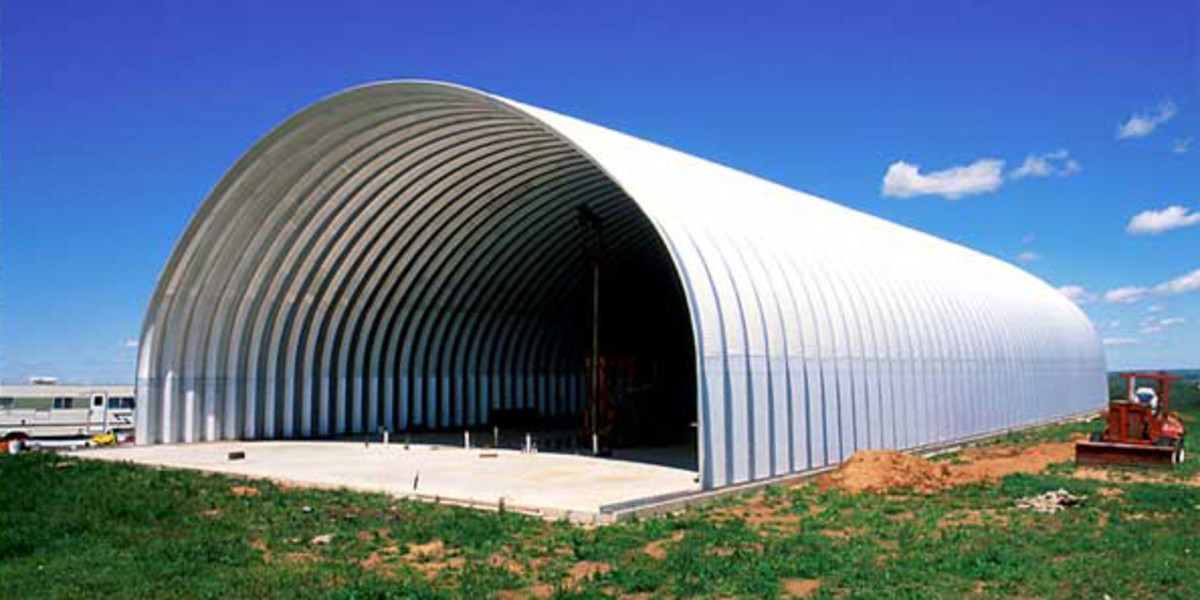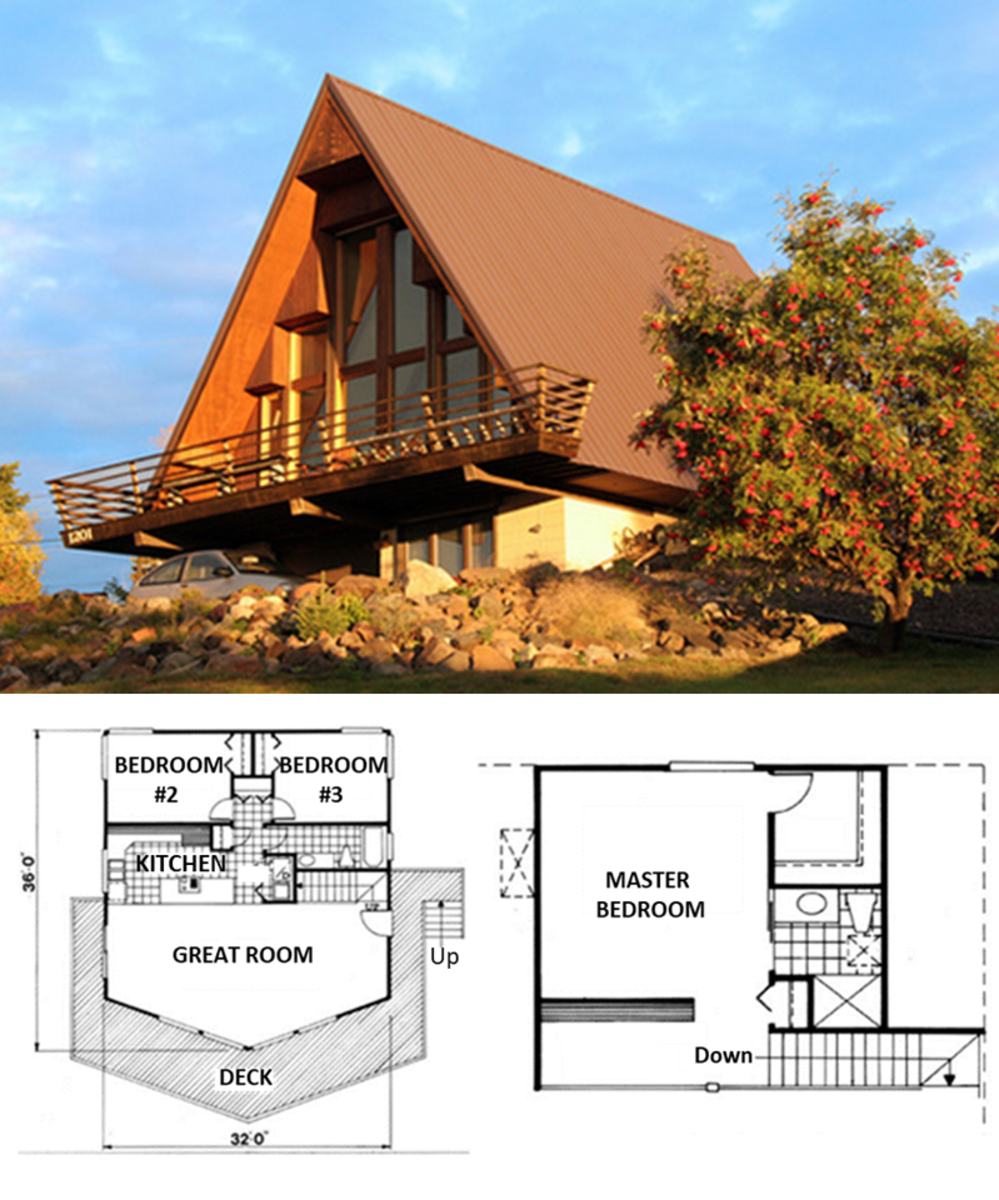Building a brick base
Typical concrete foundation on sloping site

Explaining, bricklaying on a sloping site
Welcome to our article (37), building a brick base
Dear readers, this is DIY article 2. In our last article, we wanted to tell you how to build a brick base, on a sloping site. I believe that the best thing to do is to talk in a way, as if we are building this house brick base step by step, so, let us start building it.
When we want to build a house, it is necessary to have a plan, but because we don’t have a plan, let us say that we are building a rectangular house base, which is about 8 meters wide and 12 meters long, it happens to be built on a sloping site.
Now, the foundations have been laid by the concreters and there are several concrete steps in it, because, of the slope in the land. So, the bricklayers need to pay more attention to the foundation levels. They cannot lay bricks and follow the foundations, set by the concreters, because they may not be level. In building every tradesman is responsible about his own work, so, it is wise to be careful that you don’t make mistakes, and if the trade before you have made a mistake try to adjust it, without making too much fuss if you can.
In the case of a stepped foundation, it is hard for concreters to set the concrete steps of the foundations at the right level, for the bricklayers to lay bricks on them without checking the levels, one of the reasons is that the steps in the concrete foundation may not be the same gauge of the brickwork that we are going to lay.
As we have explained in our previous article about levels, we have already marked the level on the profiles and stretched a tight line above the southern brick wall; from this level line we can check the levels on the southern brick wall.
Now, to make things easy let us start with one working bricklayer, and let us assume that the bricklayer has marked the outside boundary corners and has started to lay a few bricks on the foundation; he is building a corner four bricks high at the lowest corner of the house. He has chosen to make the corner four brick high, because from his measurement he knows that there is a difference of three bricks in the foundation, therefore, his fourth brick on the corner that he is building now, is going to be level with the first brick on the opposite corner, having built his corner four bricks high and having laid his firs brick on the other corner, now he can stretch his brickies line between these two points and start working his stretcher bond from his lowest corner, making sure that the bricks he lays are laid in line and level.
Let me explain, in bricklaying it is important that the entire building is set in stretcher bond from the start, even if there are other types of bonds that are going to be used in the brickwork, because the stretcher bond is always the main bond, as this bond will continue throughout the building; therefore, the bricklayer cannot build the other corner until he runs a full course in stretcher bond from the first corner that he has built at the start, once that is done he can proceed to build both corners.
--------------------------------
Timber house on a brick base
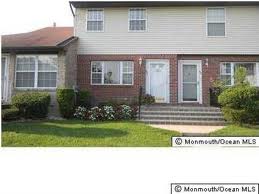
How we proceed to build this brick base
Now, to give an easier description let us say that the lowest corner of the house is the South East corner, the South West corner is three bricks higher than the South East corner and the other corners are higher than these two corners. Now as I have said the bricklayer has built this corner four bricks high and laid one brick at the west corner as marked, so, he is ready to lay brick, but before he does that he double check everything with his gauge rod, he checks from his line level that he has set above, or with the water level that his fourth brick in the corner is level with his first brick on the west corner, let us assume that they are level and they are the same course of bricks.
Now he can start laying brick in stretcher bond, from the South East corner working his way to the west corner, he sets his brickies line as he sees fit making sure that the levels and the alignment are right, when he reaches the fourth course, which is the first full course in this wall he tries to work out if he can start this whole wall in stretcher bond, without cutting any bricks by increasing or decreasing the perpendicular joints between the bricks, if he cannot achieve that, then one brick must be cut a bit shorter; small pieces are to be avoided as they are unsightly and they weaken to wall. While doing this job, one has to keep in mind that in a face brick wall the perpendicular joints become unsightly if they are bigger than the bed joint, therefore, it is better to keep the perpendicular joints smaller than the bed joint.
Now that the first course of bricks in stretcher bond has been laid from corner to corner, the bricklayer will lay bricks in the inside of this brickwork, if it is just a one brick thick wall he will lay the bricks right against the bricks he has already laid, but if it is a cavity wall then he has to set his inside wall as specified, most time this space between the walls is about 50mm. Now that the lowest wall has been set, he moves to work on the eastern wall, since this is the second lowest wall in this brick base.
----------------------------------
Just a simple lowset brick base

Working on the eastern brick wall
The eastern stepped concrete foundation is a longer foundation and it has a difference in level of about 1.2 meter and this will be about 15 courses of bricks.
First, the bricklayer stretches the external line and a level tight line above the eastern wall, from these two lines he can check the outside alignment and the levels, then he checks and lays his first brick on the foundation near the first concrete step, as he has a four brick high corner he can lay one to four brick next to the concrete steps. I must say here that it is hard to explain just by writing a text to show exactly how everything is done, but in building everything is common sense, so, use your imagination to see how things can be done.
Anyhow, let us assume that the bricklayer has set his bricks and now he is running his stretcher bond, from the south eastern corner to the north eastern corner of the house and the fourth course of bricks has been laid and the inside brick has been laid. At this point of time the bricklayer needs to build the south eastern corner higher to proceed with the works, unless another bricklayer is doing that for him. You see, I am writing this article as if there is a single bricklayer on the site at the beginning, but I am doing that because that is the only way to show you how we can start this brick base correctly.
Anyhow at this point of time the bricklayer wants to add a couple more courses on the walls that he has started, so that his walls in this corner are higher than the ground and the trench then can be back filled at this corner of the house, so that it is easier for him and everybody else to work on level ground.
But before he does that, he knows that he must check what else needs to be done, he notes that there is an opening for a door after he lays another two or three courses of bricks and that he needs to reinforce his brickwork with some brick mesh reinforcement before the opening occurs, and there is also a dampcourse to be laid at the opening level, this dampcourse is only needed in this lower part of the base, because they are going to lay a concrete floor and build a couple of rooms under the house. The dampcourse is a thin layer of material that stops the dampness passing from the ground up and from one level to another; it works both ways depending on the way it is laid.
In the specifications says that the reinforcement is needed every four courses and under and above all openings. So, he lays his mesh reinforcement on the walls and builds another corner three brick high, this is the level where the first opening occurs, it is also the level of the damp course. Here we need to note that to make it easier to understand what is happening, this south eastern corner is now seven bricks high form the foundation, at this point of time it is better that all the brickwork in the base is built to this level.
Once you have all the brickwork level, the dampcourse is laid according to the specification, and the first problem is solved in this lower part of the brick base. So, now the bricklayer/s can start building higher corners, as they did when he started, or if they want they can set bricklayer profiles if they are available, since now the brick walls at this lower end of the house are set at the right level and alignment.
----------------------
Laying brick, single brick in stretcher bond
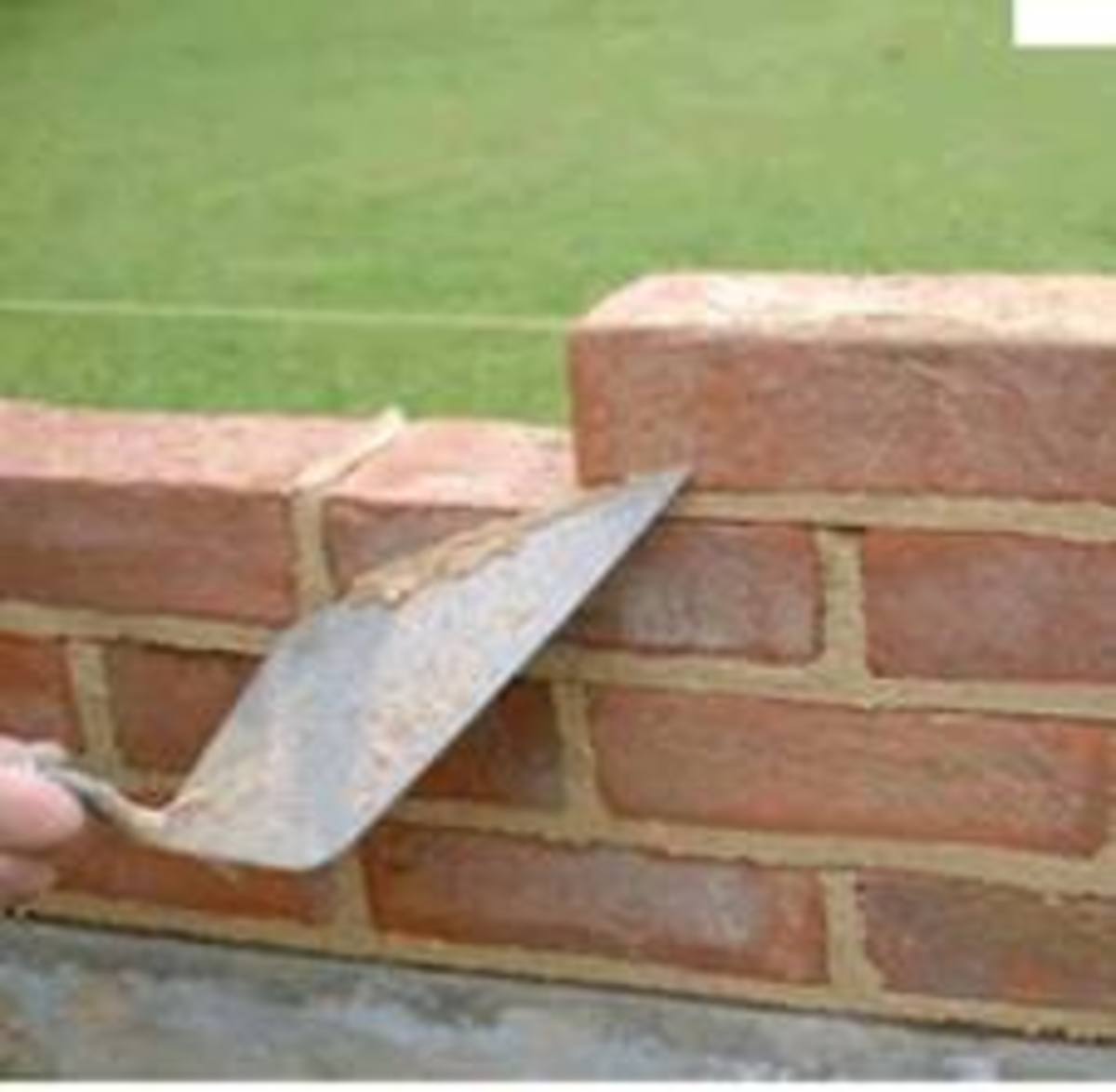
Bricklaying for a house requires team work
On the above written explanation, we have assumed as if there was only one bricklayer on the job, but to build a brick base a small gang of bricklayers and labour/s are needed, say two or three bricklayers and a labour. Sometimes there are no strict rules on the job, and they can help each other. Mind you this can only work with small gangs, and the bricklayer foreman is there to guide the team and help whoever needs help. On large team everyone has his own job to do, and when the unions have a say, they want you to do only your own job and nothing else, so, sometimes the unions are not helpful, but then again they need to have their own rules otherwise they cannot exist.
Anyhow, let us go back to building this house brick base; now that the first part of the base has been started, the bricklayers must be careful to start the rest of the base correctly, so, they continue to lay brick and check for levels and alignments’ as they have done before, by building one wall at a time and a course at a time, until they bring all the brickwork level with the first brick on the foundation on the highest corner of the house foundation, here again everything must be checked and rechecked again, to make sure that everything is level and set at the right alignment and above all that there is no pig in the brickwork. To make sure there is no pig in it; all the walls must be built at this level and checked, and then proceed to build everything to the finish height required.
I believe that this article has become too long, because of the explanations that are required, so, it is better if we write another article, and talk about what is going-on on the work site, while we are building this house brick base, and explain what is meant by a pig in the brickwork.
To make it easy for you to follow, this is the link to our article, House brick base continues
See you soon.
------------------------------------------
Some useful building links
- House brick base continues
DIY brickwork, will show you how a brick base is built step by step by professional bricklayers, in the hope that this article may help some one that is interested in doing some brickwork themselves. - The castle of
The castle of Monteserico in Genzano the Lucania has a history of its own, even though there isn't a real history written, today we are trying to put together known events and show you some photos. - D.I.W. house repairs
Replacing an old set of timber stairs with concrete treads on hot dip galvanized steel stringers, including step by step procedure and what you need to know if you want to D.I.Y. to save money. - DIY Retaining walls
We are going to show you several types of retaining walls and how to build them, some of them briefly and other step by step, so that you could be able to do it yourself, if you like. - DIY brickwork
Thinking of laying bricks yourself, then read this hub it could help. DIY brickwork; Getting ready to lay bricks; making sure that we start the brickwork level, and Laying bricks on a sloping site. - Menfranco general blog
General blog - Genzano it story
This is a blog talking about the town that I come from and my life story - Australia affordable houses
Building houses to sell is usually good business, when they sell easily, but when they don't sell the builders should really watch what they are doing, because they may need to sell their houses at cost and sometime below cost. Therefore for the buye - House building in Brisbane
Let us talk about houses building, some reasons why there are different ways of building in the whole world; ands in this hub we are going to talk about; House building in Brisbane in the sixties; Brick bases under timber houses, and, Working as a br

